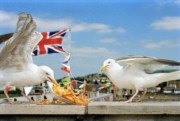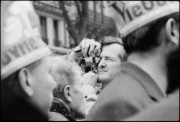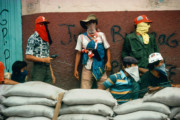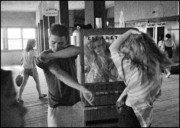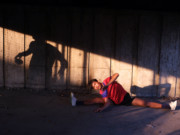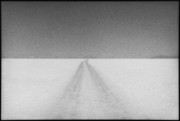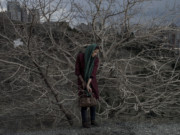Koudelka’s Beirut: The Vision of What Cannot Be Seen
Lebanese writer Dominique Eddé on the universal significance of Josef Koudelka’s depiction of the city of Beirut
This September, a multi-faceted exhibition of Josef Koudelka’s work goes on show at the Dar El-Nimer for Arts and Culture in Beirut. The Wall/Beirut displays two of the Czech photographer’s projects in conjunction. The Wall is comprised of panoramic landscape photographs, taken between 2008 and 2012, of the wall separating Israel and Palestine – often referred to by Palestinians as the ‘Apartheid Wall’. Koudelka’s Beirut work on the other hand documents the devastated city centre at the end of the Lebanese Civil War in 1991. Here, Lebanese writer Dominique Eddé writes about the humanistic and universally accessible portrayal Koudelka created of the capital in the latter body of work.
These photographs of the city centre of Beirut were taken in the autumn of 1991, within the framework of a mission of six prominent photographers from different countries. Koudelka stayed twice in Beirut that year: in October, then in November. From sunrise to sunset, he roamed the city like a wild animal, hunting photographs like prey. Standing up, bending over, perching on a crane, lying on the side of the road, he crafted every second for hours.
"There is time, nothing but a time where both history and geography have served as landmarks"
- Dominique Eddé
He was fully mobilised to expose the invisible. The questions, which he asked were concise, precise and practical. He talked to people with his eyes, with a tap on the shoulder, or an audible greeting. From soldiers to water vendors, to customers of Café de la Paix, to old militia fighters who still haunted certain places, he did not miss a single greeting, nor did he have any judgments or prejudices. His respect was disarming, and his raw kindness humanised relationships.
"An alliance of beauty and time at the height of death"
- Dominique Eddé
Here, like everywhere else – in his work and his life – his time was connected to silence: focused, without diversion, unornamented. Perfectly connected to that of ruins. Indifferent to account and anecdote. Favourable to the vision. So much that the Beirut of his photos belongs to nobody. It’s a wound, a universal place, where man destroyed man. What remained after man’s passing. Based on the values scale, at the bottom of the perspective, the small wandering figure crushed by the giant stopped stone clock. This image is self-explanatory of the representation, which Koudelka personally portrays of humankind: such a small thing for such a great mystery. The very frontal way in which he approaches misery or beauty is in itself accompanied by mysterious manoeuvre – at least inexplicable – which consists of dismissing everything that does not count in that face-off. It is within this puzzling fall of screens and masks where the unique power of his photographs emerges.
Compared to his previous works, these images of Beirut inaugurate, if I am not mistaken, the moment where ruins – beyond the destruction of the landscape – became a part of his work. More precisely, the remains of time lived where the human-made landscape was present without humans. For around twenty years, between 1991 and 2017, Koudelka sequentially surveyed Greco-Roman ruins of all the countries of the Mediterranean. The result is an impressive work: physical and metaphysical; abstract and historical, as close as possible to the unfathomable yet well beyond nostalgia. In advance, by the bias of the past, on the present and the future as it promises to be. An alliance of beauty and time at the height of death.
"It’s a wound, a universal place, where man destroyed man"
- Dominique Eddé
When seen one next to the other, the Wall in Palestine, cutting life out of life, and the crumbled walls of the old city of Beirut, how can one not think of a tragic connection between the two? One recounts the construction of deconstruction, whilst the latter highlights the opposite: the deconstruction of construction. They both show the result of human foolishness when it is nurtured by fear. In both settings, Koudelka says everything, in one image and without any commentary, so much that his works bear no news. There is time, nothing but a time where both history and geography have served as landmarks. In eliminating politics, in the common sense of the term, he imposes another policy: the one that answers to the extreme consciousness of responsibility. Koudelka is a visionary who namely illustrates the difference between an inhuman ending and a human ending.











